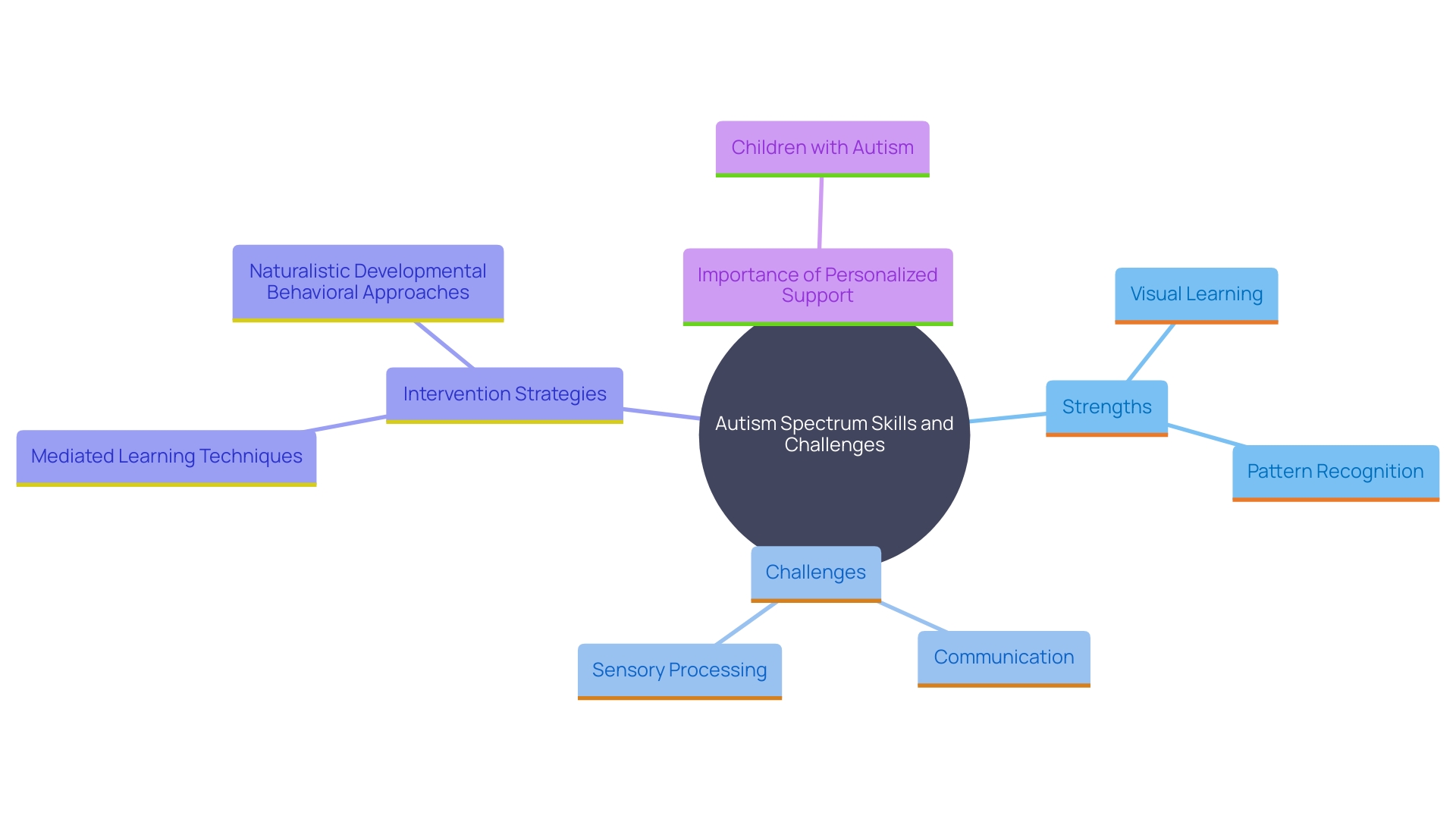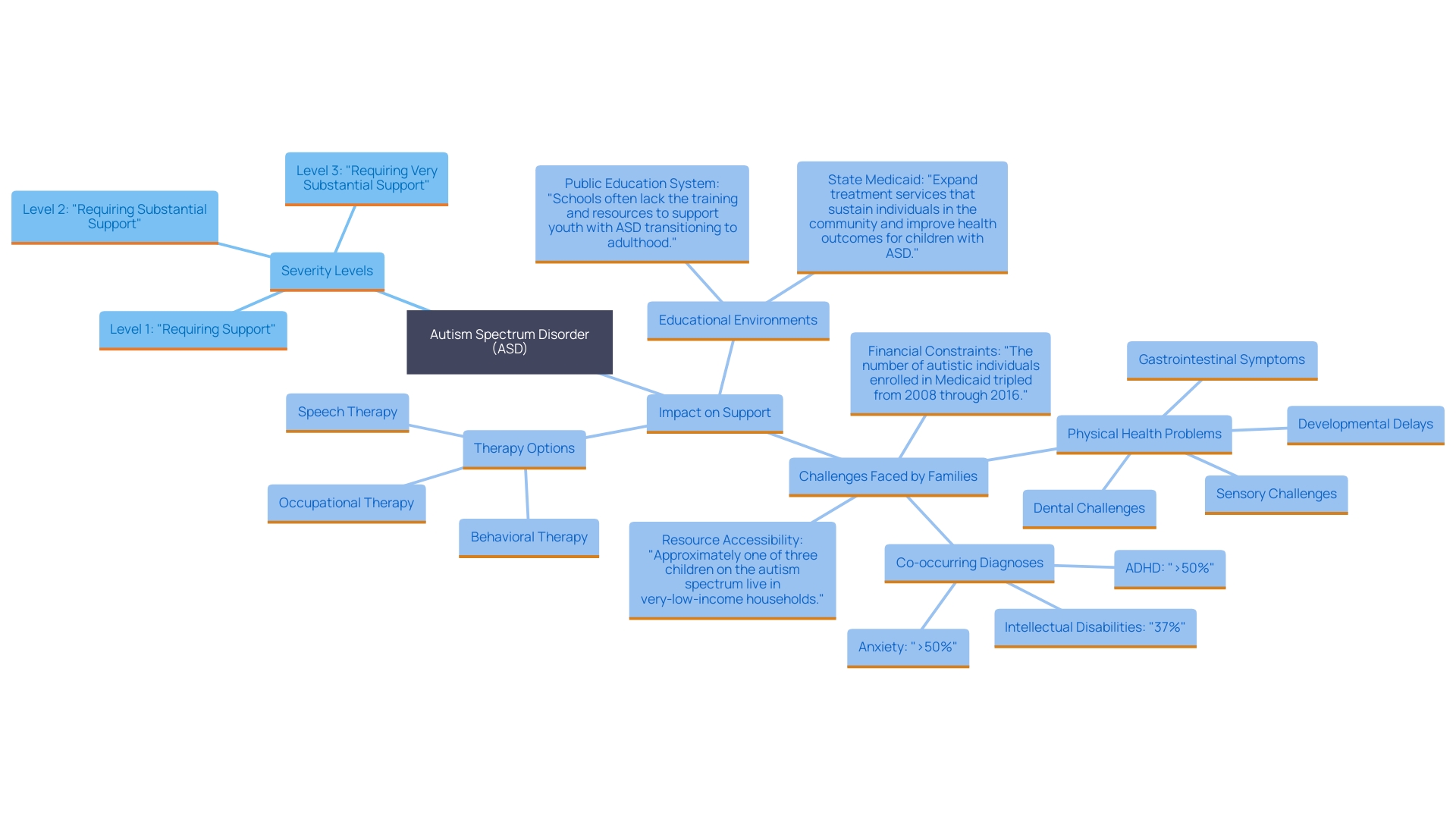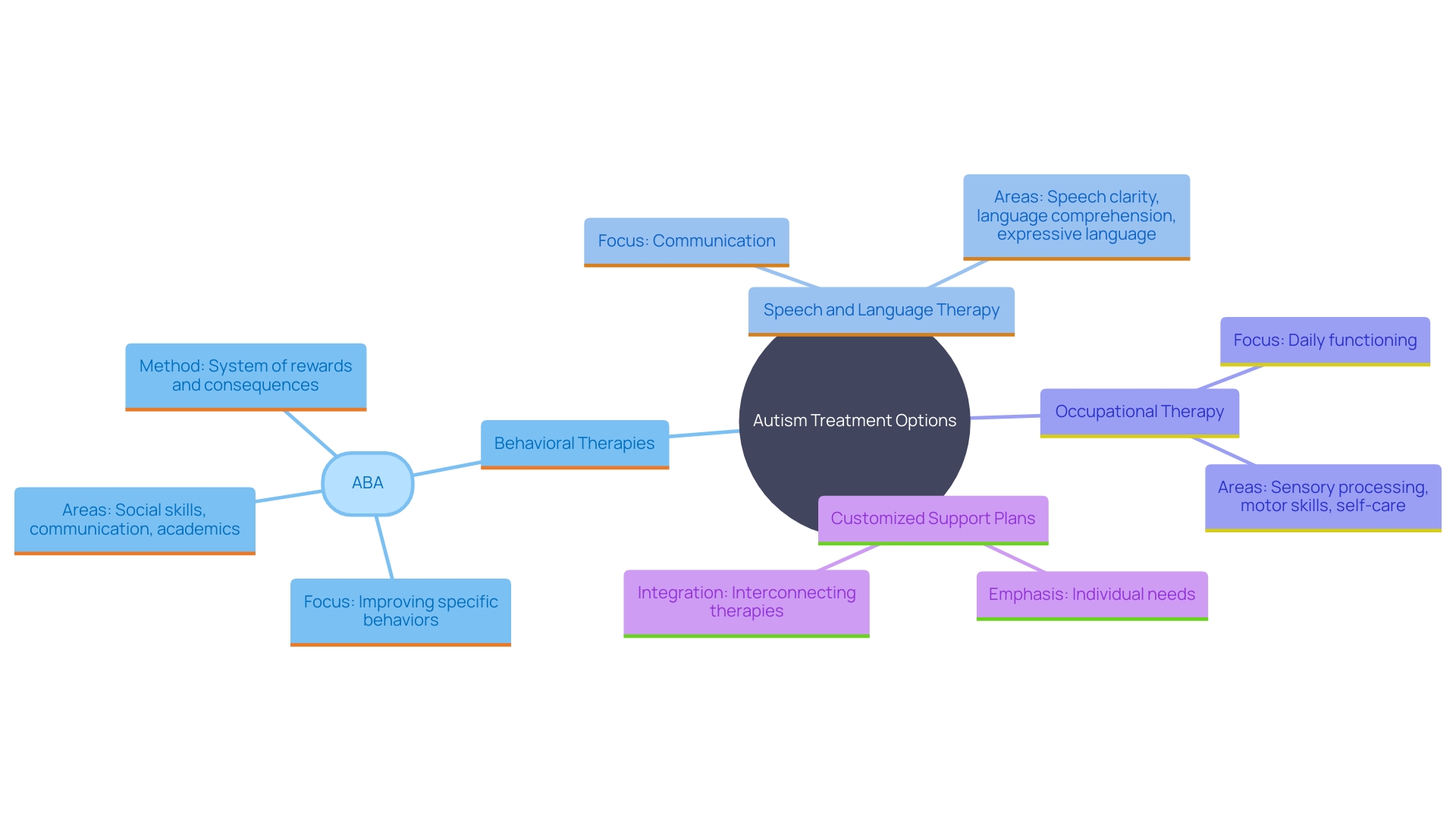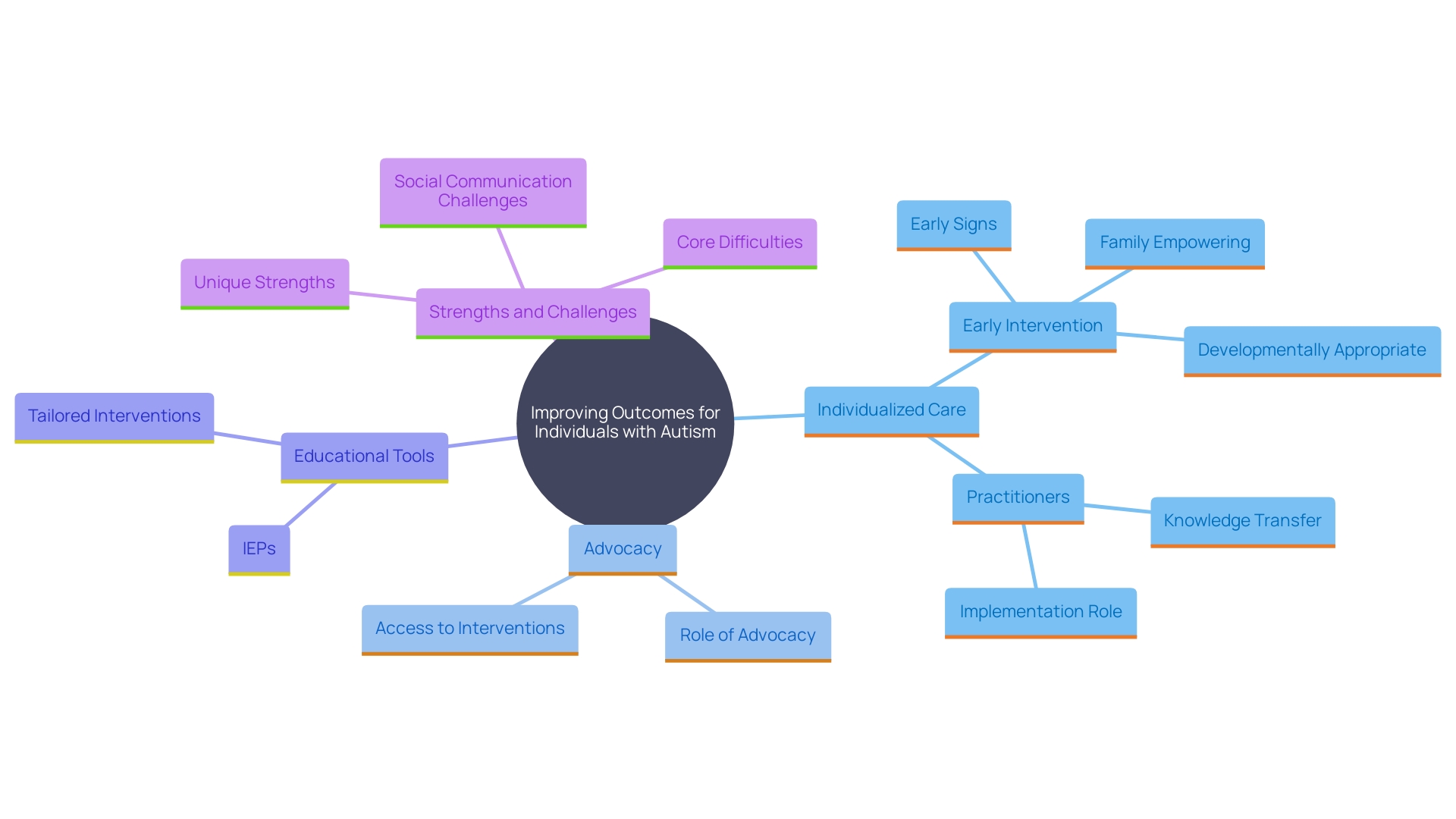Introduction
Autism Spectrum Disorder (ASD) is a multifaceted neurodevelopmental condition that presents a unique set of challenges and strengths in individuals. Understanding its complexity is crucial for parents and caregivers aiming to support their children effectively. This article provides an in-depth exploration of ASD, highlighting the importance of early intervention, the spectrum's vastness, and the tailored approaches necessary to foster development.
Groundbreaking research and expert insights emphasize the critical role of personalized care and support, empowering parents to navigate the myriad of challenges and advocate for their children's well-being. Discover how to harness the latest findings and resources to ensure a fulfilling and supportive environment for children with autism.
What is Autism Spectrum Disorder?
Autism Spectrum Disorder (ASD) is a complex neurodevelopmental condition characterized by a range of challenges related to social interaction, communication, and behavior. The term 'spectrum' reflects the wide variety of symptoms and skills that individuals with this condition may exhibit, ranging from mild to severe. This diversity means that no two individuals with the condition are alike, and their experiences can vary significantly.
Research from the University of Geneva (UNIGE) highlights how individuals with autism often show interest in non-relational stimuli like textures or geometric shapes, rather than interpersonal elements such as faces or interactions. By monitoring where young viewers gaze while watching a cartoon, the study discovered that the attention patterns of autistic individuals do not follow the same developmental path as their typically developing counterparts. These findings indicate the significance of early interventions aimed at improving attention to help direct autistic children towards developmental paths akin to their peers.
Moreover, a study from the University of Virginia underscores the potential for written communication among nonspeaking autistic individuals. The research revealed that many of these individuals possess literacy skills, opening doors to educational, employment, and social opportunities that were previously thought inaccessible. This emphasizes the necessity for tailored, individualized support to unlock the full potential of each individual on the spectrum, recognizing their unique capabilities and needs.
Understanding the Spectrum in Autism
The idea of a spectrum in this condition highlights the broad variety of skills and difficulties that individuals with the disorder can display. This spectrum includes strengths in areas such as visual learning and pattern recognition, paired with difficulties in interpersonal communication and sensory processing. A key challenge for children with autism is the need to enhance communication skills, something that can be supported early in a child’s development.
Comprehending this spectrum is essential for parents and caregivers, as it emphasizes the necessity for personalized methods to support and assistance. Dr. Hannah Schertz, a professor at Indiana University Bloomington, has highlighted the significance of assisting parents in utilizing mediated learning techniques to enhance communication. Her study, supported by the Institute of Education Sciences (IES), has demonstrated that early assistance can considerably enhance communication skills in toddlers with or at risk for developmental disorders. This approach targets the core challenge of autism and addresses concerns early, as signs of autism emerge.
Proof indicates that developmental programs enhance communication skills, especially in interactions with caregivers. 'Naturalistic developmental behavioral approaches have demonstrated notable impacts on adaptive behavior, language, play, and communication with others.'. For example, research has discovered that these approaches enhance fundamental issues related to developmental disorders, particularly problems with interpersonal communication.
Furthermore, new assessment methods, such as a tablet-based game measuring participants’ ability to anticipate letter sequences, have revealed literacy competencies in over half of the nonspeaking autistic participants. This innovative approach highlights the potential for written communication, unlocking educational, employment, and social opportunities for nonspeaking autistic individuals.
Dr. Schertz’s work and additional studies highlight the significance of early, developmentally suitable strategies that are customized to the distinct requirements of each individual on the spectrum. These interventions not only tackle the core challenges of autism but also empower families to support their offspring's development effectively.

Characteristics and Symptoms of ASD
Autism Spectrum Disorder (ASD) manifests uniquely in each individual. Some may experience difficulties in communication and interpreting social cues, while others might exhibit restrictive or repetitive behaviors. Exceptional skills in specific areas are also common, though challenges with daily living skills may persist. Comprehending these varied traits is essential for parents to obtain customized assistance and approaches for their offspring's needs.
One noteworthy aspect is the wide range of behaviors and abilities observed in youngsters with ASD. For instance, some youngsters might show a strong, ongoing interest in specific subjects or items, while others may follow routines or rituals closely. This variability underscores the importance of personalized approaches in diagnosis and care.
Diagnostic tools for ASD often rely on detailed descriptions from parents and observations by professionals. According to the DSM-5, accurate diagnosis involves multidisciplinary evaluations, including inputs from psychologists, psychiatrists, or pediatricians specializing in developmental disorders. This comprehensive approach ensures that the unique needs of each individual are recognized and addressed.
Supporting a young person with ASD also involves navigating various challenges, such as securing appropriate school placements and accessing necessary care services. High demand and limited resources can impede these efforts, highlighting the need for persistent advocacy and increased support systems.
Educational and behavioral therapies have shown to be beneficial for many kids with ASD. Methods like Applied Behavior Analysis (ABA) focus on enhancing specific behaviors, such as social skills and communication, through positive reinforcement. Customized treatment strategies, which may involve biomedical approaches, play a vital role in assisting youngsters with ASD to flourish.
Recent research advances, like those from the University of Rochester’s long-term brain development study, continue to enhance our understanding of ASD. Results suggest that variations in brain structure among youth with developmental differences can influence their growth, presenting new pathways for focused therapeutic approaches.
Ultimately, recognizing the spectrum nature of autism allows parents to better understand their offspring's unique strengths and challenges. This understanding is crucial for seeking appropriate interventions and fostering a supportive environment that promotes their offspring’s well-being.
Severity Levels and Support Needs
Autism Spectrum Disorder (ASD) is classified into different severity levels, each indicating the amount of support an individual might need. These levels range from minimal support to substantial assistance in daily activities. This classification is crucial for parents as it aids in making informed decisions about educational environments, therapy options, and resources that effectively cater to their unique needs.
Comprehending the severity levels assists in navigating the intricate realm of care for individuals with developmental differences. For instance, securing an appropriate school placement often hinges on the severity of the individual's needs, which can be a challenge due to high demand and limited resources. A study supported by the Community Foundation for Northern Ireland found that parents often face significant delays in obtaining a diagnosis, which is essential for accessing proper educational and care services.
Moreover, the rate of ASD diagnoses has increased dramatically over the past two decades, rising from 1 in 150 to 1 in 36. This surge highlights the pressing need for more resources and support systems. Roughly one-third of young individuals with autism reside in very-low-income households, and many of these families depend on Medicaid, whose enrollment for autistic individuals tripled between 2008 and 2016. This demographic is also nearly five times more likely to receive mental health care compared to their neurotypical peers.
Parents frequently report feeling overwhelmed and anxious due to the lack of accessible support. 83% of parents surveyed did not have access to ASD-friendly resources within their community, citing barriers such as distance, lack of transport, and insufficient childminding options. These challenges often force parents to rely on charity and voluntary support, which has been impacted by funding cuts.
Thus, understanding the severity levels of ASD not only aids in customizing the suitable interventions for youth but also highlights the necessity for systemic enhancements in support frameworks for families. Enhanced awareness, better resource allocation, and targeted support can significantly improve the quality of life for both children with ASD and their parents.

Treatment Approaches and Interventions
The range of treatment options available for individuals with autism is vast, encompassing behavioral therapies, speech and language therapy, and occupational therapy. Each method is intended to improve crucial areas such as communication abilities, interpersonal interaction, and daily functioning. Behavioral therapies, for instance, have been shown to significantly improve social communication, particularly when involving caregiver interactions. However, it’s essential to monitor for potential adverse effects due to inadequate reporting.
Speech and language therapies are essential, particularly as studies show that early auditory processing abilities can forecast language growth in young individuals with developmental disorders. This means that actions concentrating on responding to sounds and distinguishing between them can guide improvements in language abilities. Occupational therapy, in contrast, tackles the fundamental challenges of developmental disorders by assisting youngsters in acquiring practical skills for everyday living, ranging from fine motor abilities to sensory integration.
Considering the variety of requirements among individuals on the autism spectrum, tailored support plans are essential. Parents should collaborate with professionals to customize these plans, ensuring the strategies are developmentally suitable and family-empowering. This approach not only addresses the immediate needs of the young one but also sets a foundation for long-term positive outcomes.
With the increasing occurrence of spectrum disorder—now estimated at one in 36 children—early and effective intervention is more critical than ever. By exploring these varied treatment options and working closely with experts, parents can find the best strategies to support their child's unique needs and enhance their overall development.

The Importance of Personalized Care and Support
Individualized care and assistance are crucial when dealing with the intricacies of this condition. Each individual on the spectrum possesses unique strengths and challenges that require customized support. Evidence indicates that developmental strategies, including naturalistic developmental behavioral approaches, significantly enhance core challenges linked to autism, especially in social communication. Timely and developmentally suitable measures are vital, as they directly tackle these fundamental challenges, promoting improved long-term results.
Research highlights the significance of early action. For example, information from the Centers for Disease Control and Prevention shows that prompt identification and support can greatly enhance the quality of life for youth with developmental disorders, allowing for substantial progress in social communication, adaptive behavior, play, and language. This is particularly vital for toddlers showing early signs of autism, as early interventions can empower families and provide the necessary support.
Moreover, advocacy plays a pivotal role in ensuring access to these crucial services. Federal and state healthcare protections exist to prevent discrimination against autistic individuals, although gaps in insurance coverage still pose challenges. Organizations like the Autism Community in Action (TACA) and the Autism Response Team provide invaluable resources to navigate these complexities, advocating for comprehensive care and support.
In the educational sphere, navigating the system can be overwhelming for parents. Individual Education Plans (IEPs) and alternatives to traditional public education are essential tools in advocating for a student's needs. By fostering an understanding of these unique requirements, parents can champion effective strategies and resources, ensuring their children receive the support necessary for their growth and development.

Conclusion
The exploration of Autism Spectrum Disorder (ASD) reveals its multifaceted nature, highlighting the diverse challenges and strengths individuals face. Understanding the spectrum is essential for parents and caregivers, as it underscores the importance of early intervention and personalized support. Research emphasizes that tailored approaches can significantly enhance social communication and overall development, ensuring that children with autism can thrive in various environments.
Recognizing the severity levels of ASD is crucial for informed decision-making regarding educational and therapeutic resources. The increase in diagnoses over the years calls for improved support systems and resource allocation to better serve families. Parents often encounter barriers that hinder access to necessary care, making advocacy and awareness vital in navigating these challenges.
Furthermore, the importance of personalized care cannot be overstated. Early and developmentally appropriate interventions are key to addressing core difficulties, fostering positive outcomes for children. Collaboration with professionals to create individualized intervention plans empowers families, enhancing their ability to support their child's unique needs.
In conclusion, the journey through autism is complex, but with the right knowledge and resources, parents and caregivers can create a supportive environment that champions the well-being and growth of their children. Empowerment through education, advocacy, and personalized care ensures that each child on the spectrum can reach their full potential.




